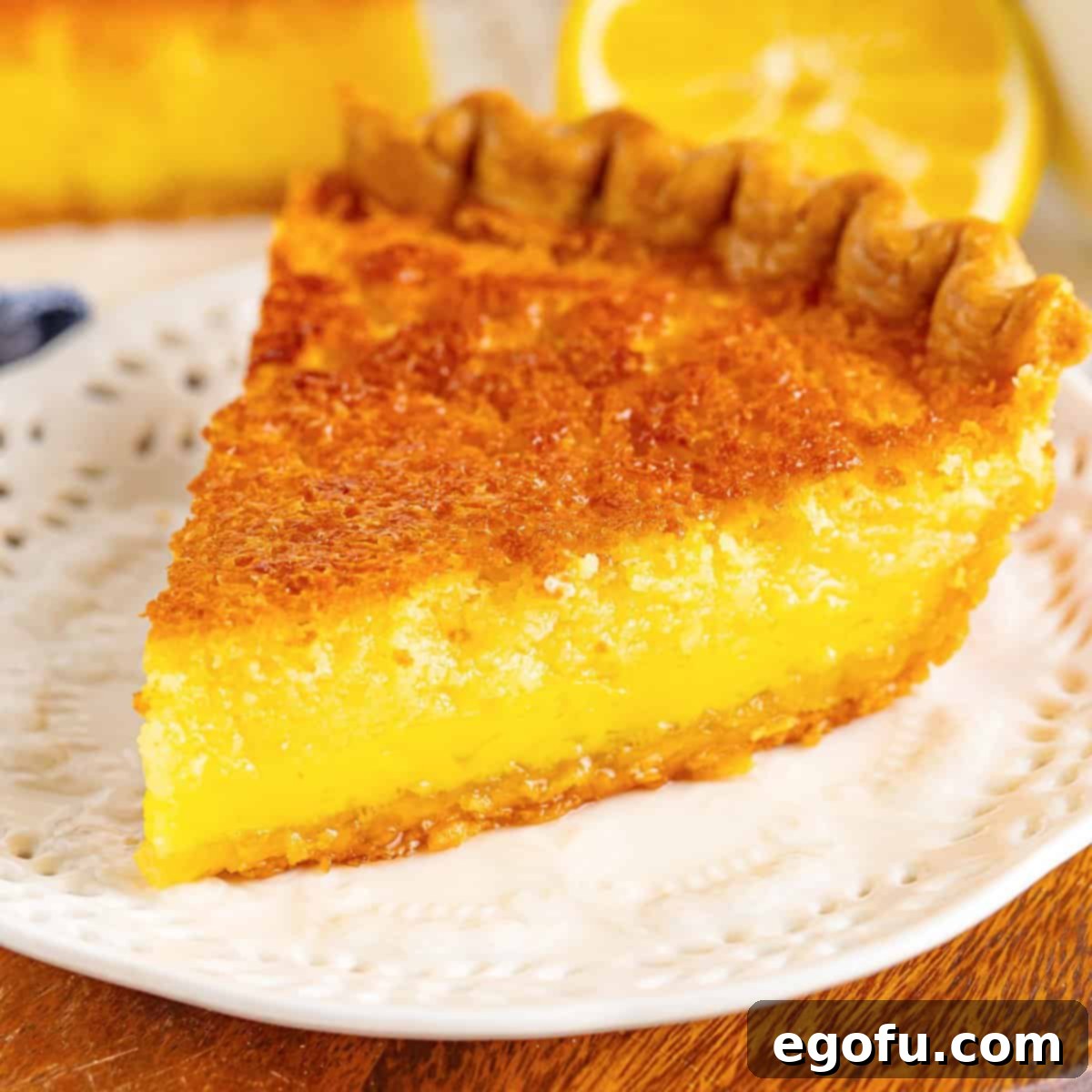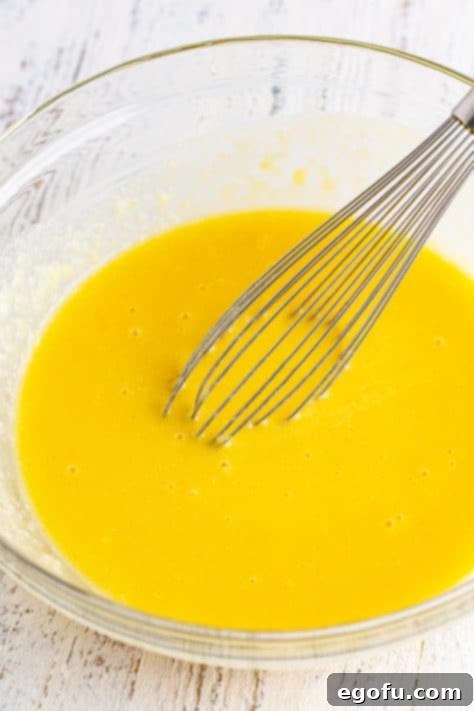Welcome to the comforting embrace of Southern hospitality, embodied perfectly in a slice of homemade Buttermilk Pie. This irresistible dessert, with its velvety, sweet, and subtly tangy custard-like filling, offers a taste of tradition that’s surprisingly simple to achieve. It’s a true crowd-pleaser, delivering a unique balance of flavors that leaves a lasting impression, making it a beloved staple in homes across the South and beyond.
Discovering the Allure of Southern Buttermilk Pie
Buttermilk Pie stands as a testament to the magic that can be created from a handful of humble ingredients. Often lauded for its incredible creamy texture and distinct, balanced flavor, it’s a dessert that consistently surprises and delights. Many newcomers, upon hearing “buttermilk,” anticipate an overly tart experience. However, the buttermilk is the secret to its luscious creaminess, perfectly counteracting the sweetness and contributing a delicate tang that elevates the entire pie into something truly extraordinary. It’s a dessert that proves that culinary greatness doesn’t always require complexity.
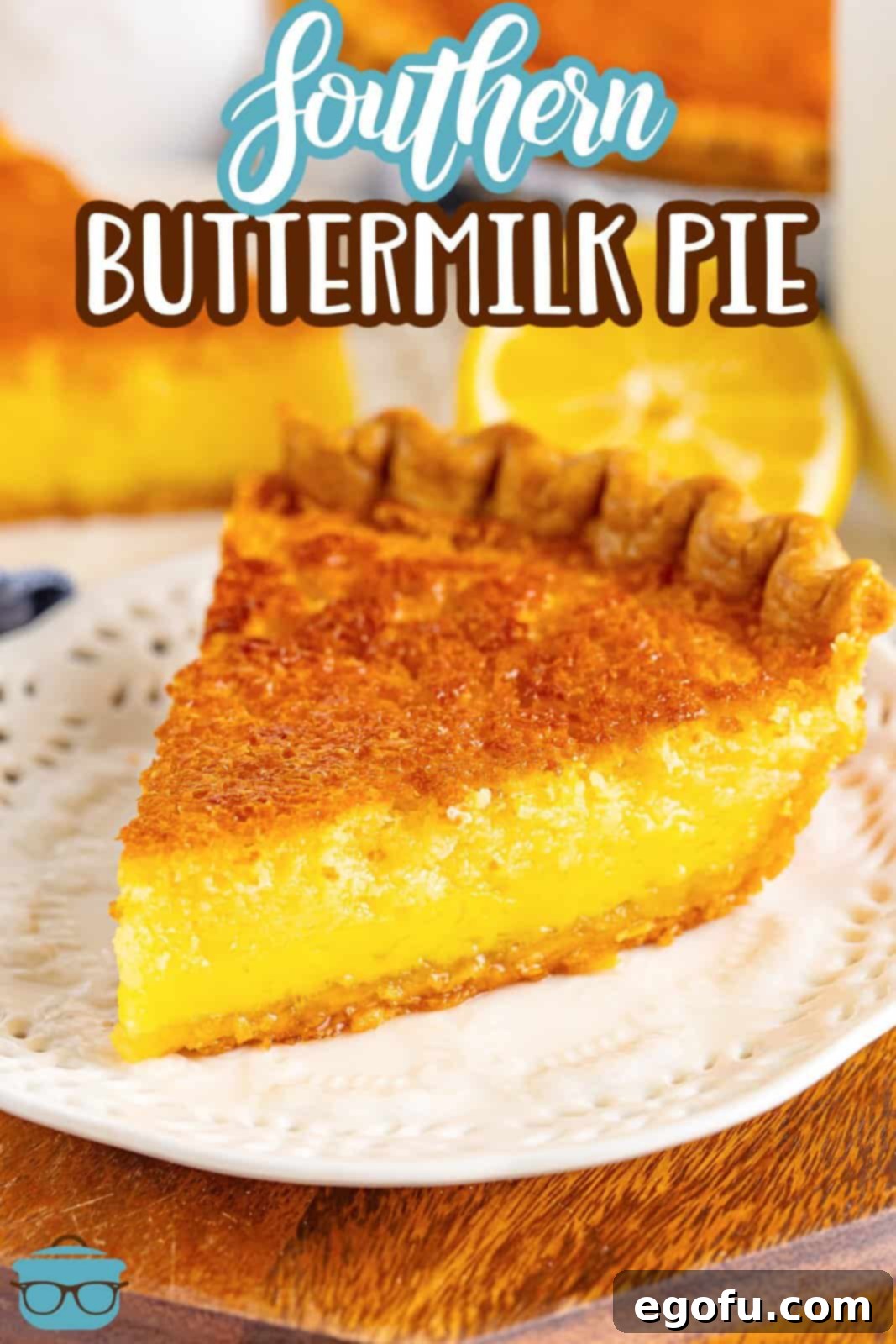
What Exactly is Buttermilk Pie? Unpacking Its Unique Flavor and Texture
At its heart, Buttermilk Pie is a classic custard pie, but with a Southern twist that sets it apart. Imagine a filling that is incredibly smooth and almost melts in your mouth, reminiscent of a crème brûlée or a rich vanilla pudding, but with an added depth. The flavor profile is a delicate dance between sweetness, primarily from sugar and vanilla, and a subtle yet distinct tanginess brought by the star ingredient: buttermilk, often enhanced with a touch of fresh lemon juice. This tanginess is not overpowering; rather, it brightens the dessert, preventing it from being cloyingly sweet and creating a wonderfully balanced taste. The texture is consistently creamy, with a slight firmness that holds its shape beautifully when sliced, all encased within a flaky, buttery pie crust. It’s a dessert that’s comforting, sophisticated, and utterly delicious, appealing to a wide range of palates.
The Southern Heritage: Tracing the Origins of Buttermilk Pie
Like many cherished heirloom recipes, the precise origin of Buttermilk Pie is shrouded in a bit of mystery, with various communities and families laying claim to its creation. However, culinary historians widely agree that this delightful dessert found its true home and widespread popularity in the Southern United States. Buttermilk, a byproduct of churning butter, has historically been a readily available and economical ingredient in Southern kitchens. It was (and still is) a versatile component in numerous recipes, from biscuits and cornbread to dressings and, of course, pies. The ingenuity of early Southern cooks led to its incorporation into custard pies, transforming simple ingredients into a rich and satisfying treat. Buttermilk Pie emerged as a comforting and resource-efficient dessert, deeply embedded in the culinary landscape of the region, symbolizing the resourcefulness and rich gastronomic traditions of the South.
Buttermilk Pie vs. Its Southern Cousins: Chess Pie and Sugar Cream Pie
The world of Southern pies can sometimes seem like a family tree with many delicious branches, and Buttermilk Pie has a few close relatives that often cause confusion. Understanding the subtle differences between Buttermilk Pie, Chess Pie, and Sugar Cream Pie can deepen your appreciation for each unique dessert.
Buttermilk Pie: The Creamy, Tangy Sweetheart
As we’ve explored, Buttermilk Pie is characterized by its smooth, creamy, custard-like filling with a distinct, gentle tang from the buttermilk and often a hint of lemon. Its texture is usually lighter and more delicate than a Chess Pie, focusing on that luxurious melt-in-your-mouth experience.
Chess Pie: The Richer, More Dense Delight
Chess Pie is another quintessential Southern custard pie, but it generally boasts a richer, denser, and sometimes slightly chewier filling. The key difference lies in its ingredients: traditional Chess Pies typically include cornmeal in the filling, which contributes to its unique texture and helps prevent the filling from separating. Additionally, Chess Pie often contains a touch of vinegar, which, similar to buttermilk, adds a subtle tang but also helps to set the pie and provides a slight depth of flavor that some describe as a “bright” note. While both are sweet and custardy, Chess Pie usually has a more pronounced sweetness and a less pronounced tang compared to Buttermilk Pie, and a texture that can be more solid or “chewy” rather than purely creamy.
Sugar Cream Pie (or Hoosier Pie): The Midwestern Homage to Simplicity
Venturing slightly beyond the deepest South, you’ll find the Sugar Cream Pie, often associated with Midwestern states, particularly Indiana, where it’s sometimes called “Hoosier Pie.” While it shares the “cream pie” descriptor, it’s distinct from Buttermilk Pie in its core ingredients. Sugar Cream Pie eschews buttermilk entirely, instead relying on heavy cream (or sometimes milk thickened with flour or cornstarch) for its base. It typically features a very simple, sweet, and rich custard filling, often topped with a generous sprinkling of cinnamon or nutmeg. It lacks the tangy complexity of buttermilk and lemon, offering a more straightforward, comforting sweetness. While all three pies celebrate simplicity and rich fillings, their defining liquid and thickening agents give each a unique character and regional identity.
In essence, if you’re seeking a pie with a pronounced creamy tang, Buttermilk Pie is your choice. If you prefer a denser, richer, slightly chewy, and intensely sweet custard, go for Chess Pie. And for a pure, unadulterated sweet creaminess, especially popular in the Midwest, Sugar Cream Pie is the answer. Each offers its own delightful experience, proving the diverse and rich tapestry of American dessert traditions.

Essential Ingredients for Your Perfect Buttermilk Pie
Crafting this delightful Southern dessert requires a few key ingredients, each playing a crucial role in achieving the signature creamy texture and balanced flavor. For the most authentic and best results, quality matters.
- Granulated Sugar: Provides the foundational sweetness. While I haven’t personally tested it, a 1:1 sugar substitute could potentially work if you are looking to reduce sugar intake.
- All-Purpose Flour: This is a vital thickening agent for the custard filling, giving it structure and preventing it from becoming too runny.
- Buttermilk: The star of the show! For the truest Southern Buttermilk Pie experience, genuine cultured buttermilk is indispensable. Avoid homemade buttermilk substitutes (milk with vinegar or lemon juice) if possible, as real buttermilk imparts a unique depth and creaminess that is hard to replicate. Bringing your buttermilk closer to room temperature before mixing can also help it incorporate smoothly into the batter.
- Salted Butter: Use real butter, not margarine. Butter contributes significantly to the richness and helps the pie set properly. Margarine may prevent the custard from firming up as it should. Ensure it’s melted before adding.
- Large Eggs: Eggs are crucial for the custard’s structure and richness. Like buttermilk, allowing your eggs to come to room temperature makes them easier to whisk and integrate uniformly into the mixture, resulting in a smoother filling.
- Fresh Squeezed Lemon Juice: This is a non-negotiable ingredient. The bright, zesty notes of fresh lemon juice are essential for balancing the pie’s sweetness and enhancing the buttermilk’s tang. Bottled lemon juice often has an “off” or artificial flavor that can negatively impact the delicate taste of the pie.
- Vanilla Extract: A touch of pure vanilla extract adds warmth and rounds out the flavor profile, contributing to that classic dessert aroma and taste.
- Deep Dish Pie Crust: A good pie starts with a good crust. Whether you opt for your favorite homemade recipe or a quality store-bought version, ensure it’s a deep-dish crust. The generous filling for this pie requires the extra space, preventing overflow during baking.
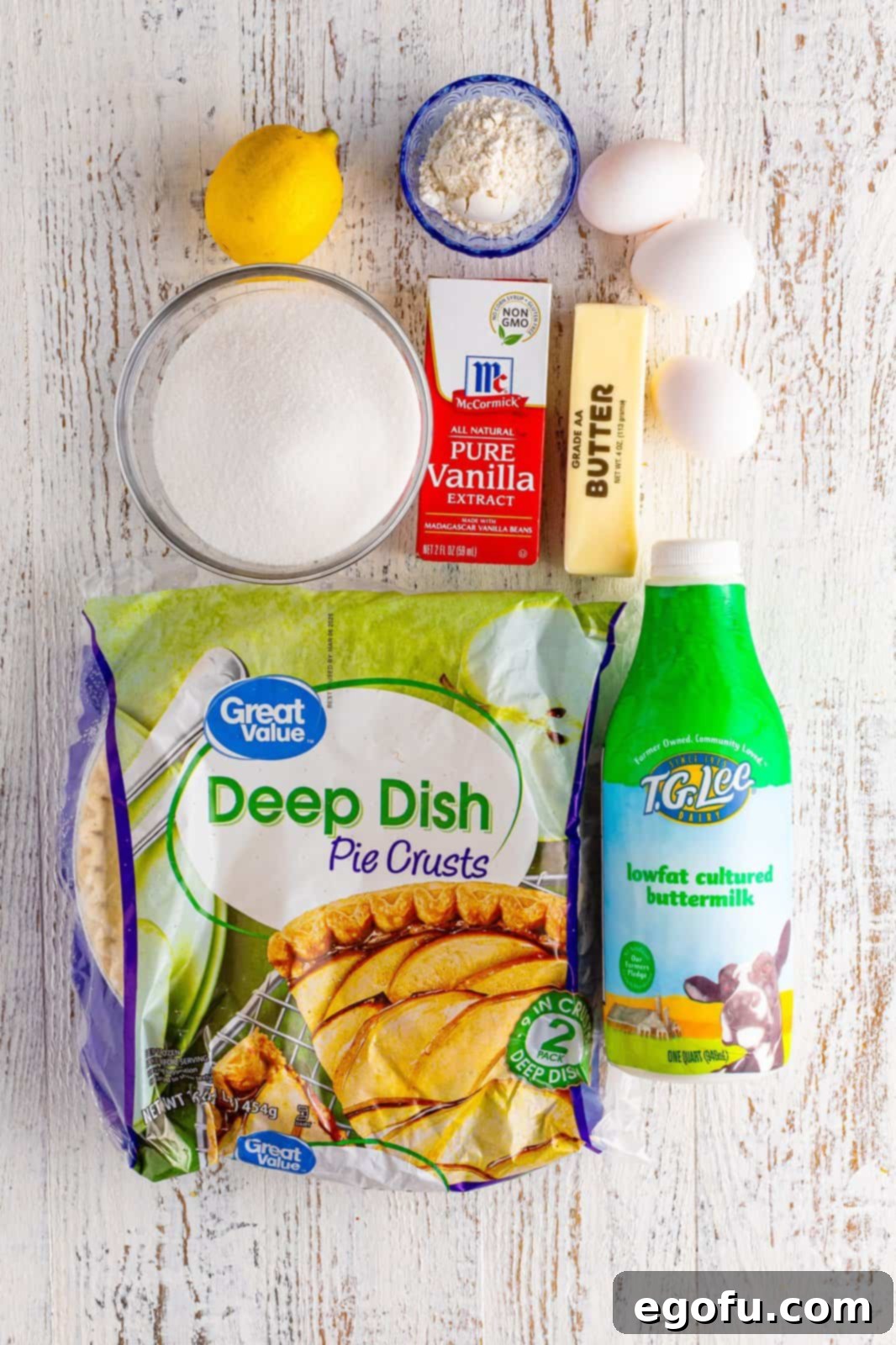
Crafting Your Own Southern Buttermilk Pie: A Simple Guide
Creating this delicious pie is straightforward, even for novice bakers. Follow these simple steps for a perfect, creamy result every time.
Begin by preheating your oven to 350°F (175°C). This ensures the oven is at the correct temperature for even baking as soon as your pie is ready to go in.
In a large mixing bowl, combine the granulated sugar and all-purpose flour. Whisk them together thoroughly until they are well combined. This initial step helps to evenly distribute the flour, preventing lumps in the final custard.
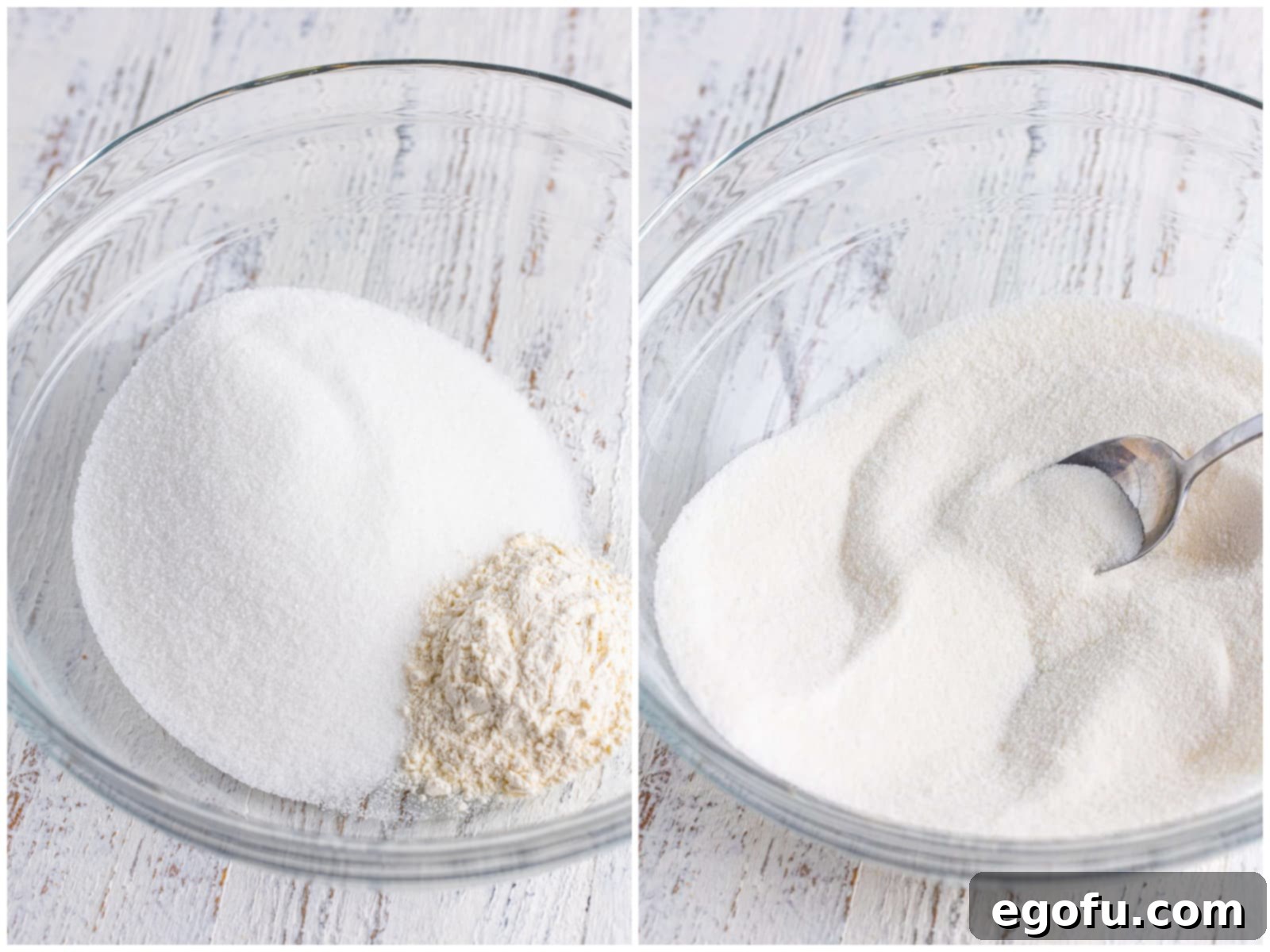
Next, add the wet ingredients to the sugar and flour mixture. Pour in the buttermilk, melted salted butter, large eggs, fresh squeezed lemon juice, and vanilla extract. Whisk all these ingredients together vigorously until the mixture is completely smooth and uniform. Ensure there are no streaks of unmixed ingredients, as this will affect the pie’s final texture and consistency.
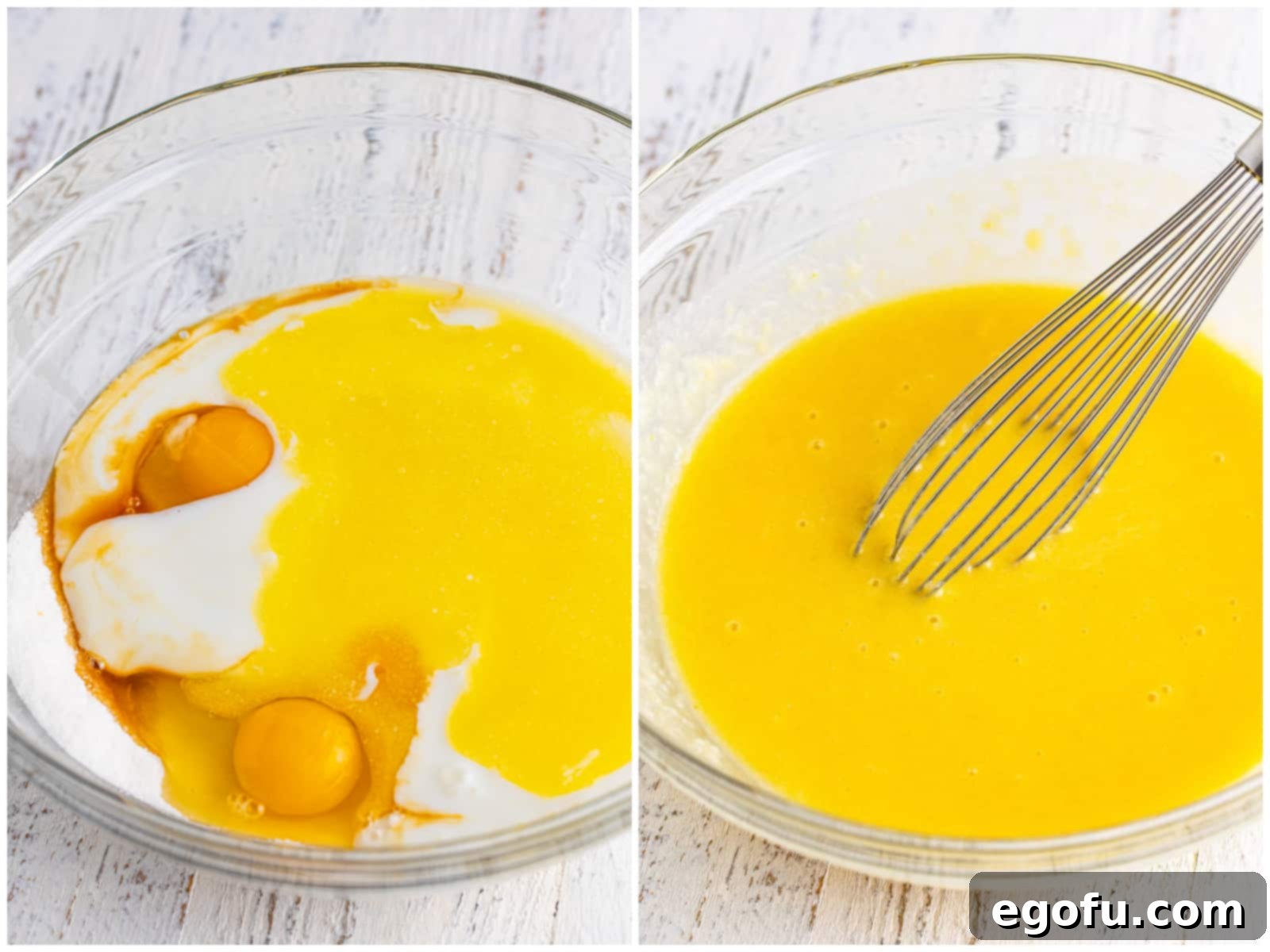
Carefully pour the smooth buttermilk mixture into your 9-inch deep dish pie crust. To prevent any spills in your oven, especially if your crust is very full, place the pie on a sheet tray before transferring it to the oven.
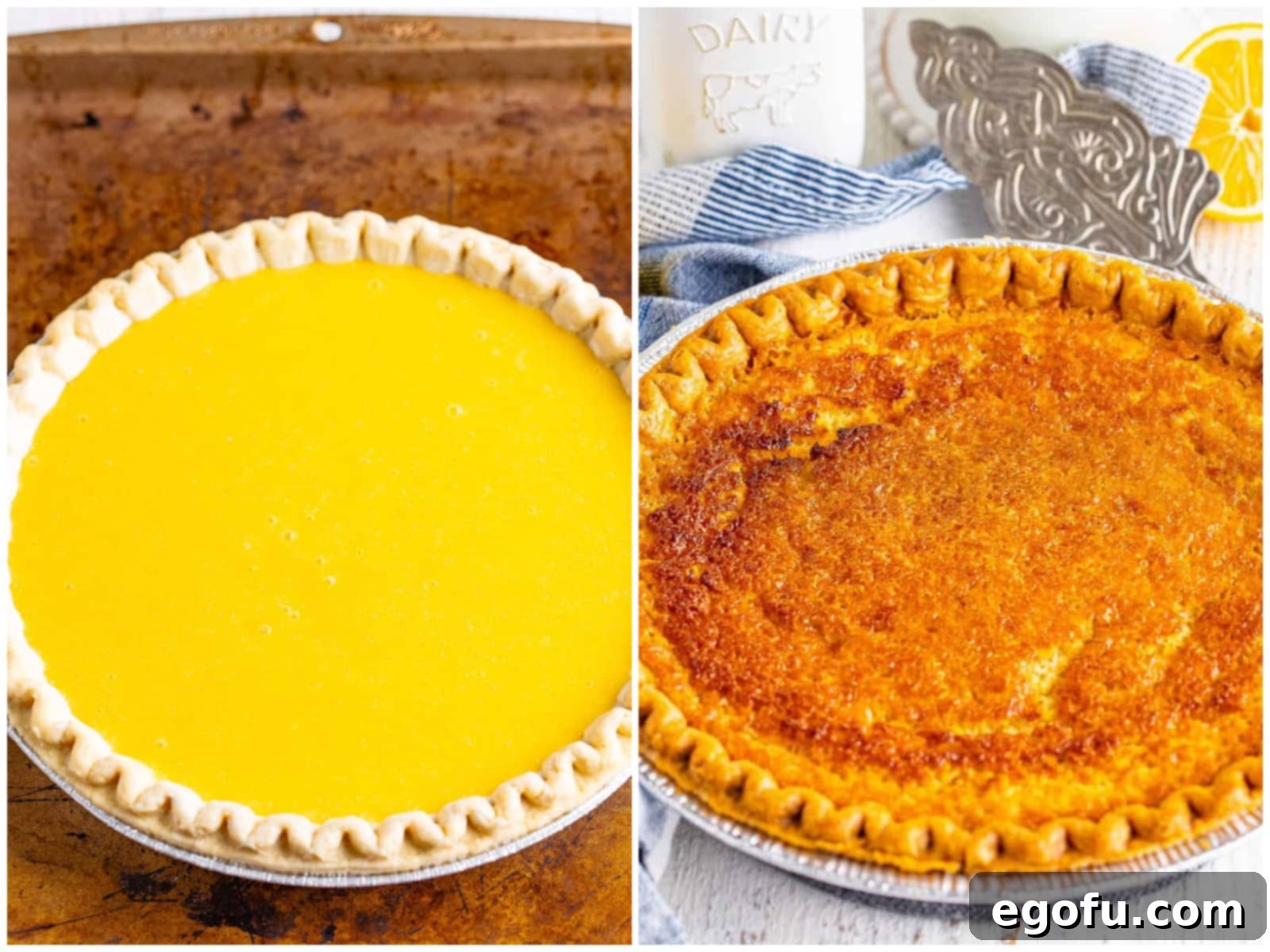
Bake the pie in the preheated oven for approximately 55-70 minutes. The pie is done when the top is golden brown and the center still has a slight jiggle when gently shaken. It will puff up during baking, which is completely normal. If you notice the crust or top browning too quickly, you can loosely cover the pie with aluminum foil to prevent over-browning.
Once baked, remove the pie from the oven and allow it to cool completely at room temperature for at least 3 hours. This cooling period is crucial for the custard to fully set and firm up. While some prefer to serve it at room temperature, many find it even more delightful when chilled. If you prefer it cold, transfer it to the refrigerator after it has cooled sufficiently at room temperature, and chill until ready to serve. For an extra touch of elegance, dust with powdered sugar or serve with a dollop of freshly whipped cream.
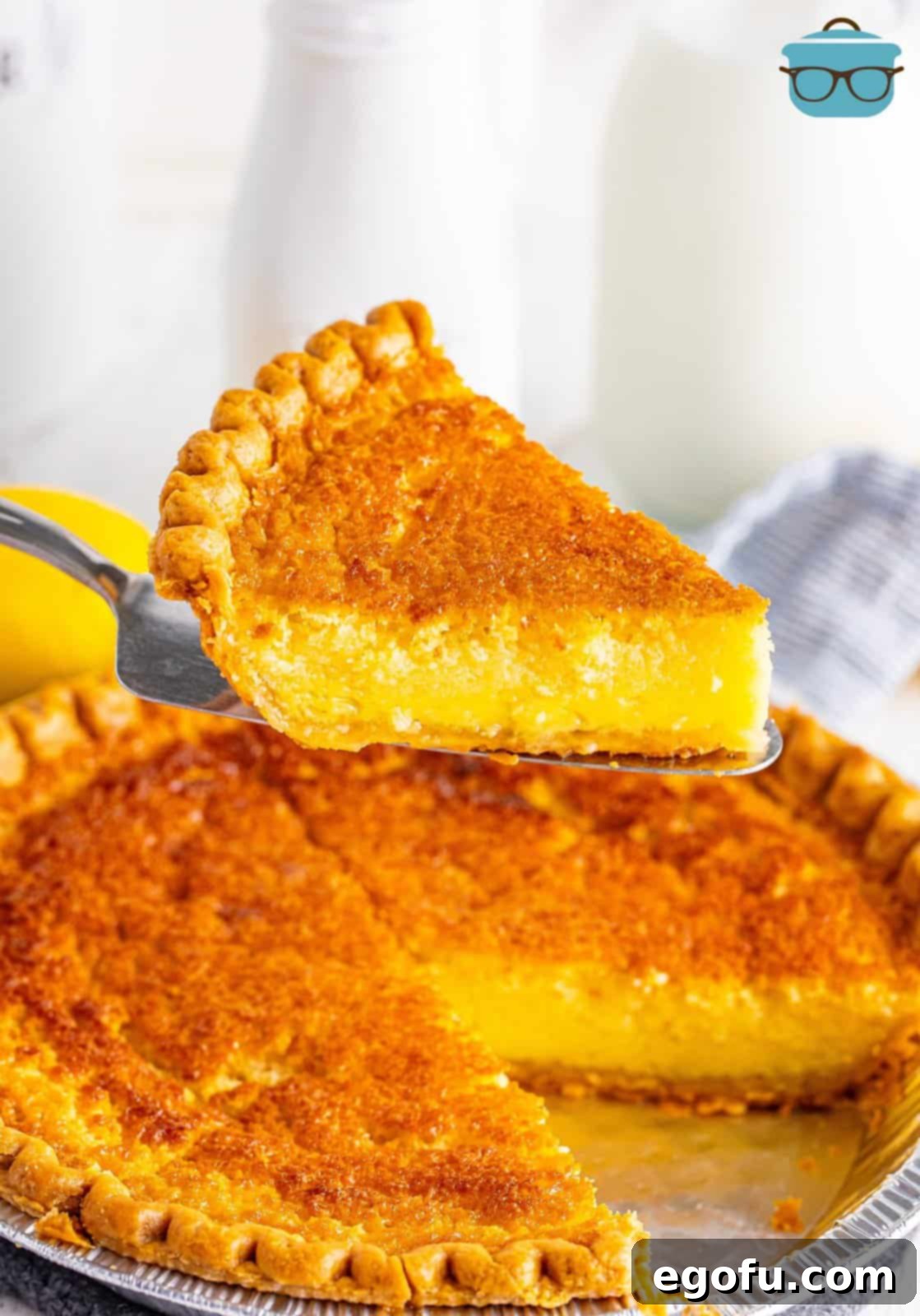
Tips for Buttermilk Pie Perfection
- Room Temperature Ingredients: Allowing your buttermilk, butter, and eggs to come to room temperature before mixing ensures they combine more smoothly and evenly, leading to a silkier, lump-free custard.
- Don’t Overbake: Overbaking is the enemy of creamy custard. The pie should still have a slight jiggle in the center when you remove it from the oven. It will continue to set as it cools. An overbaked custard can become rubbery or cracked.
- Use Fresh Lemon Juice: As mentioned, bottled lemon juice simply won’t yield the same vibrant, natural flavor. Freshly squeezed is a must for that essential bright tang.
- Prevent a Soggy Crust: Placing the pie on a baking sheet not only catches spills but can also help insulate the bottom crust from direct oven heat, potentially reducing the risk of a soggy bottom. For extra insurance, you can blind bake your crust for 10-15 minutes before adding the filling, though this recipe typically works well without it.
- Chill for the Best Slice: While you can enjoy Buttermilk Pie at room temperature, chilling it thoroughly in the refrigerator for several hours (or even overnight) allows the flavors to meld beautifully and the custard to fully firm up, resulting in cleaner slices and an even more refreshing taste.
Serving, Storing, and Customizing Your Buttermilk Pie
How to Serve Buttermilk Pie
Buttermilk Pie is wonderfully versatile when it comes to serving. Many aficionados prefer it chilled, as the cool custard provides a refreshing counterpoint to its sweetness and tang. However, serving it at room temperature also allows its nuanced flavors and creamy texture to shine. Whether you enjoy a slice on its own, or elevate it with a dollop of freshly whipped cream, a sprinkle of powdered sugar, or even a dusting of cinnamon or nutmeg, it’s sure to be a delightful experience. For a truly indulgent treat, a side of fresh berries or a drizzle of berry coulis can add a burst of complementary fruitiness.
Storage and Freezing Guidelines
Given its dairy and egg content, Buttermilk Pie must be refrigerated. Any leftover pie should be covered tightly with plastic wrap or aluminum foil and stored in the refrigerator for up to 5 days to maintain its freshness and safety. For longer storage, Buttermilk Pie freezes remarkably well. Wrap the cooled pie (or individual slices) securely in several layers of plastic wrap, then an additional layer of aluminum foil. Place it in a freezer-safe container or bag and freeze for up to 3 months. When ready to enjoy, thaw the pie in the refrigerator overnight before serving.
Creative Additions and Variations
While classic Buttermilk Pie is perfect as is, you can certainly “jazz up” the filling with a few simple additions to create new flavor dimensions.
- Spices: A pinch of freshly grated nutmeg or ground cinnamon can add a warm, aromatic depth to the custard. These spices complement the existing flavors beautifully without overpowering them.
- Coconut: For a tropical twist, consider folding flaked coconut into the filling before baking. This creates a delightful coconut buttermilk pie, adding chewiness and a sweet, nutty flavor.
- Citrus Zest: Beyond lemon juice, you could incorporate a small amount of orange or lime zest into the filling for an even brighter, more complex citrus note.
These simple modifications can transform your classic Buttermilk Pie into a customized dessert experience, tailored to your taste preferences.
CRAVING MORE RECIPES?
- Coconut Cream Pie
- Banana Pudding Pie
- Kentucky Derby Pie
- Millionaire Pie
- Key Lime Pie
- Lemonade Pie
- Chocolate Cream Pie
- Southern Pecan Pie
- Southern Peanut Pie
- Sweet Potato Pie
- Banoffee Pie
- Strawberry Cream Cheese Pie
- How to make Buttermilk

Southern Buttermilk Pie
Print
Pin
Rate
Ingredients
- 1 ⅓ cups granulated sugar
- 2 ½ Tablespoons all-purpose flour
- ¾ cup buttermilk
- ½ cup (1 stick) salted butter, melted
- 3 large eggs
- 1 Tablespoon fresh squeezed lemon juice
- 2 teaspoons vanilla extract
- 1 (9-inch) deep dish pie crust
Instructions
- Preheat the oven to 350°F.
- In a large bowl, stir together 1 1/3 cups granulated sugar and 2 1/2 Tablespoons all-purpose flour until combined.

- Add 3/4 cup buttermilk, 1/2 cup (1 stick) salted butter, melted, 3 large eggs, 1 Tablespoon fresh squeezed lemon juice and 2 teaspoons vanilla extract and whisk until smooth.

- Pour the mixture into 1 (9-inch) deep dish pie crust that is set on top of a sheet tray. This will help catch any spillage.

- Bake for 55-70 minutes until golden brown on top. The pie will puff up and will still be slightly jiggly. If it appears to be browning too fast, you can cover it with foil.

- Allow to cool for at least 3 hours at room temperature; serve or place in the fridge until ready to serve if you prefer it cold. Optional: Dust with powdered sugar or serve with a dollop of whipped cream.

Video
Notes
- Please refer to my FAQ’s (Frequently Asked Questions) and ingredient list above for other substitutions or for the answers to the most common questions.
Nutrition
Nutritional Disclaimer
“The Country Cook” is not a dietician or nutritionist, and any nutritional information shared is an estimate. If calorie count and other nutritional values are important to you, we recommend running the ingredients through whichever online nutritional calculator you prefer. Calories and other nutritional values can vary quite a bit depending on which brands were used.
